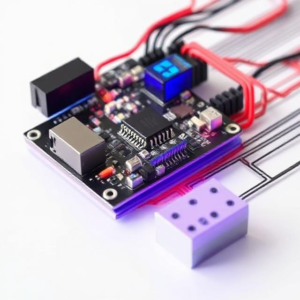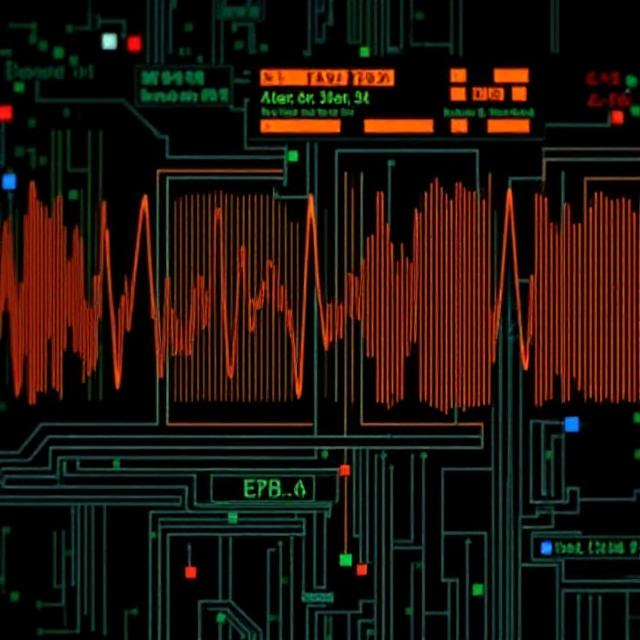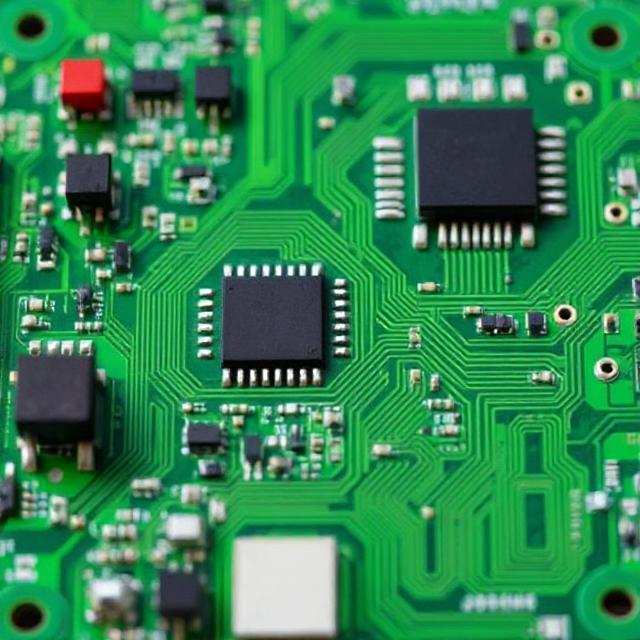Designing a power supply for an embedded system involves creating a way to provide electrical power to the various components of a system (like microcontrollers, sensors, and communication modules). The goal is to make sure the system gets stable and reliable power while being energy-efficient and meeting specific requirements.

1. What is an Embedded System?
An embedded system is a computer designed to do a specific task. Examples include:
- Smart thermostats
- Wearable fitness trackers
- Home security cameras
- Automated machinery in factories
These systems often run on battery power or a low-voltage power supply.
2. Why is Power Supply Important for Embedded Systems?
The power supply is critical because:
- It ensures the system gets the right amount of voltage and current.
- It maintains a stable power level, preventing damage to sensitive components.
- It should be energy-efficient, especially for battery-operated devices, to extend battery life.
3. Key Considerations in Power Supply Design for Embedded Systems:
A. Voltage Requirements:
Different parts of an embedded system need different amounts of voltage:
- Microcontrollers (MCUs) might run on 3.3V or 5V.
- Sensors may have their own voltage needs (e.g., 3.3V, 5V, or even higher).
- Some components might require high-voltage or low-voltage power.
You need to design the power supply to convert the available input voltage (e.g., from a battery or wall adapter) to the required voltage for each component.
B. Current Requirements:
- Current is the amount of electricity the system uses at any given time, measured in amperes (A).
- Different components draw different amounts of current. For example, a Wi-Fi module might draw more current than a simple sensor.
- The power supply must be able to provide enough current for the system to run reliably without overloading.
C. Power Efficiency:
- Power efficiency is crucial for battery-powered embedded systems (like wearables or remote sensors) because you want to use the least amount of energy while maintaining performance.
- The power supply should ideally convert power with minimal losses (less heat generation and wasted energy).
- Switching regulators (like buck converters) are commonly used because they are efficient, especially in systems with varying loads.
D. Power Regulation:
- Power regulation ensures that the voltage and current remain constant, even if the load (the components using the power) changes or the input power fluctuates.
- Linear regulators provide simple regulation but are less efficient and generate heat. They’re used for low-power, low-noise applications.
- Switching regulators (buck or boost converters) are more efficient and suitable for larger systems where energy efficiency matters more.
E. Noise Filtering:
- Embedded systems, especially in sensitive applications like medical devices or audio equipment, need to minimize electrical noise that can interfere with the signals.
- Decoupling capacitors and filtering components can be used to reduce noise and ensure stable operation.
4. Types of Power Supplies in Embedded Systems:
A. Battery-Powered Supply:
- Many embedded systems (like sensors or wearables) use batteries (like lithium-ion or lithium-polymer) as a power source.
- A charging circuit is needed to recharge the battery when the system is connected to power, such as a USB charger.
- Power management ICs (Integrated Circuits) are often used in these systems to manage battery charging, power distribution, and voltage regulation.
B. AC-to-DC Power Supply:
- For systems that are plugged into an electrical outlet, an AC-to-DC power supply is used to convert the alternating current (AC) from the wall into direct current (DC) for the system.
- This involves a transformer to step down the voltage and a rectifier to convert AC to DC.
C. USB-Powered Supply:
- Many embedded systems (like development boards and simple devices) can be powered through a USB connection.
- USB provides 5V DC, which is convenient and common in many embedded designs. Some systems use USB power regulation circuits to adjust the voltage or current to match the needs of the system.
5. Key Components in Power Supply Design:
A. Voltage Regulators:
These devices ensure that the voltage is kept at the correct level for your system, regardless of input fluctuations.
- Linear Regulators: Simple but less efficient. Used when power loss isn’t a big concern.
- Switching Regulators: More efficient and used for battery-powered or high-performance systems.
B. Capacitors:
Capacitors smooth out voltage fluctuations and reduce noise. They are used to stabilize the power supply and protect against sudden changes in load or voltage spikes.
C. Inductors:
Inductors are used in switching regulators to store energy temporarily and help with the conversion process.
D. Diodes:
Diodes protect the system by allowing current to flow in only one direction, preventing reverse voltage from damaging components.
E. Power Management ICs (PMICs):
These are integrated circuits that handle the complex tasks of power regulation, battery charging, and power distribution. They’re especially useful in systems with multiple components requiring different voltage levels.
6. Steps to Design a Power Supply for Embedded Systems:
- Identify Power Requirements: Determine the voltage and current needs of each component in the system (microcontroller, sensors, actuators, etc.).
- Choose the Power Source: Select the type of power input (battery, AC wall adapter, USB) and the method of voltage regulation (linear or switching regulator).
- Select the Power Supply Components: Choose voltage regulators, capacitors, inductors, diodes, and PMICs based on your system’s power requirements.
- Optimize for Efficiency: Select the most efficient components and consider the total power consumption of the system. This is especially important for battery-powered devices.
- Ensure Stability: Add necessary components (like capacitors or filters) to reduce noise and provide stable power.
- Test and Verify: Once the design is built, test it thoroughly to ensure the power supply works correctly under different conditions (voltage variations, load changes, etc.).
Conclusion:
Designing a power supply for an embedded system is all about providing the right voltage and current while ensuring the system operates efficiently and reliably. Key factors include understanding voltage requirements, selecting the appropriate power source and components, ensuring energy efficiency, and minimizing noise. With careful planning, you can design a power supply that meets the needs of your embedded system and extends battery life or ensures stable operation.








